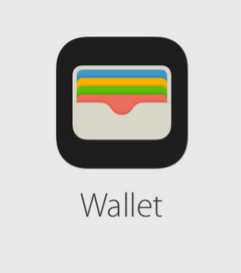Latest Posts

Protecting consumers from fraud this summer vacation It’s that time of year again – when people all over the U.S. take time away from life’s daily chores and embark upon that much-needed refresh: vacation! But just as fraud activity spikes during the holidays, evidence shows fraudster activity also surges during the summer, as the fraudster’s busy season is when we step away for some well-deserved rest and relaxation. With consumers on vacation, identity theft becomes easier. We all know someone who has been the victim of identity theft, resulting in fraudulent purchases on their credit card, or their bank accounts being emptied. Consumers are most likely to break from their normal spending habits, and credit card’s fraud analytics teams struggle to differentiate these changes in spending behavior for a family on vacation from a fraudster who has compromised dad’s identity. To make matter seven more challenging, consumers are less likely to take measures that will help minimize fraud while they are out of town, making the fraudster’s job easier. Identifying risky behaviors, or patterns outside of a consumer’s normal behavior when used in combination with a knowledge-based authentication session can help validate that the individual is indeed who they claim to be. A knowledge-based authentication solution with a wide variety of question types to complicate the fraudsters ability to pass should be part of a risk-based approach to on-going account management, especially when combined with a risk score and device intelligence. Take measures to incorporate a knowledge-based authentication solution with a diverse range of question types to help protect your business and your customers from being burned while on vacation, at least by fraudsters. For more on travel spending behavior and projections for summer 2015, click here.
According to a recent Experian analysis, millennials (ages 19–34) are now the largest segment of the U.S. population and are also the least credit savvy group.

Imagine the following scenario: an attacker acquires consumers’ login credentials through a data breach. They use these credentials to test account access and observe account activity to understand the ebbs and flows of normal cash movement – peering into private financial records – verifying the optimal time to strike for the most financial gain. Surveillance and fraud staging are the seemingly benign and often-transparent account activities that fraudsters undertake after an account has been compromised but before that compromise has been detected or money is moved. Activities include viewing balances, changing settings to more effectively cover tracks, and setting up account linkages to stage eventual fraudulent transfers. The unfortunate thing is that the actual theft is often the final event in a series of several fraudulent surveillance and staging activities that were not detected in time. It is the activity that occurs before theft that can severely undermine consumer trust and can devastate a brand’s reputation. Read more about surveillance, staging and the fraud lifecycle in this complimentary whitepaper.

According to VantageScore® Solutions' annual validation study, VantageScore 3.0 scores 36 million incremental consumers considered unscoreable by conventional credit scoring models.

Understanding shelf companies and shell companies In our world of business challenges with revenues level or trending down and business loans tougher than ever to get, “shelf” and “shell” companies continue to be an easy option for business opportunities. Shelf companies are defined as corporations formed in a low-tax, low-regulation state in order to be sold off for its excellent credit rating. Click on the internet and you will see a plethora of vendors selling companies in a turn-key business packages. Historically off-the-shelf structures were used to streamline a start-up, where an entrepreneur instantly owns a company that has been in business for several years without debt or liability. However, selling them as a way to get around credit guidelines is new, making them unethical and possibly illegal. Creating companies that impersonate a stable, well established companies in order to deceive creditors or suppliers in another way that criminals are using shelf companies for fraudulent use. Shell companies are characterized as fictitious entities created for the sole purpose of committing fraud. They often provide a convenient method for money laundering because they are easy and inexpensive to form and operate. These companies typically do not have a physical presence, although some may set up a storefront. According to the U.S. Department of the Treasury’s Financial Crimes Enforcement Network, shell companies may even purchase corporate office “service packages” or “executive meeting suites” in order to appear to have established a more significant local presence. These packages often include a state business license, a local street address, an office that is staffed during business hours, a conference room for initial meetings, a local telephone listing with a receptionist and 24-hour personalized voice mail. In one recent bust out fraud scenario, a shell company operated out of an office building and signed up for service with a voice over Internet protocol (VoIP) provider. While the VoIP provider typically conducts on-site visits to all new accounts, this step was skipped because the account was acquired through a channel partner. During months one and two, the account maintained normal usage patterns and invoices were paid promptly. In month three, the account’s international toll activity spiked, causing the provider to question the unusual account activity. The customer responded with a seemingly legitimate business explanation of activity and offered additional documentation. However, the following month the account contact and business disappeared, leaving the VoIP provider with a substantial five figure loss. A follow-up visit to the business showed a vacant office suite. While it’s unrealistic to think all shelf and shell companies can be identified, there are some tools that can help you verify businesses, identify repeat offenders, and minimize fraud losses. In the example mention above, post-loss account review through Experian’s BizID identified an obvious address discrepancy – 12 businesses all listed at the same address, suggesting that the perpetrator set up numerous businesses and victimized multiple organizations. It is possible to avoid being the next victim and refine and revisit your fraud best practices today. Learn more about Experian BizID and how to protect your business.

According to the latest Experian-Oliver Wyman Market Intelligence Report, mortgage originations increased 25% year over year in Q1 2015 to $316 billion.

According to a recent Experian survey, 68% of vacationers spend more money than expected when traveling, often relying on credit cards to make up the difference. Millennials rank even higher when it comes to risky vacation spending. One-third report they have not been saving up in advance of vacation, 72% say they spend more than expected when traveling, and 50% plan to use their tax refund to pay for summer travel this year. Lenders can educate consumers about the impact of utilization on credit scores and reduce loss rates by offering According to a recent Experian survey, 68% of vacationers spend more money than expected when traveling, often relying on credit cards to make up the difference. Millennials rank even higher when it comes to risky vacation spending. One-third report they have not been saving up in advance of vacation, 72% say they spend more than expected when traveling, and 50% plan to use their tax refund to pay for summer travel this year. Lenders can educate consumers about the impact of utilization on credit scores and reduce loss rates by offering personalized credit-education services.personalized credit-education services. >> Infographic: Setting a budget for summer travel
A recent Experian survey found that while consumers are getting better about protecting their information on a regular basis, many do not take the same precautions when traveling. According to the survey, 1 in 5 consumers has had an item with sensitive information lost or stolen while traveling, and 39% have experienced identity theft while traveling or know someone who has. Organizations can protect themselves and customers by using innovative fraud-detection tools designed to reduce potential losses while preserving the customer experience. >> Video: The reputational impact of fraud and identity theft

Soaring in the solar energy utility market By: Mike Horrocks and Rod Everson The summer is a great time of the year - it kicks off summer and the time to enjoy the sunshine and explore! It is also for me the recognition that days now are only getting shorter and makes me think about my year goals and am I going to hit them. In this spirit of kicking off summer, I thought I would talk about three opportunities that the utility vertical could and should take advantage of. 1. The future of Solar Photovoltaics (PV) is just getting brighter A recent study called out an expected 25 percent jump in Solar PV installs over the previous year. This is jump is just another in a long line of solar install records. While the overall cost of these installs has dropped, one must ask whether the accessibility is there for everyone. The answer is not yet. A potential opportunity may come in the form of community solar as an advantage over rooftop solar. This scenario involves a utility installing an array of PV cells and then carving out a specific cell for an individual residential customer for lease, crediting his or her bill at a percentage of the cost. 2. Generations are bringing change Just as spring gives way to summer, summer will give way to fall. The same is true in the utility markets on many fronts. At a larger infrastructure scale, utilities have to think about the kind of plants and capital investments they want to make. Another report indicated that 60,000 megawatts of coal energy is going to be retired over the next four years. This obviously will change the capital decision making functions in the industry. At a more personal level, however, there are changes in the consumers and their behaviors as well. Are those changes being accounted for in your organization? Is the next generation of consumers and the products and services it will demand being formulated in your strategy? How will you identify those consumers and secure them as customers? For example, while electrical energy consumption has been decreasing, what would be the impact if there was a revolution in battery technology? What if charging an electric automobile battery became as fast as filling a tank of gas? What if the battery gave you the same mileage range as a tank of gas and did it at a lower cost per mile? Would electric usage spike? 3. Blackouts happen; be prepared The best-laid plans sometimes still cannot account for those acts of God that cause disruptions to the grid. Blackouts happen, and if you don’t have flashlights with new batteries, you will be left in the dark. The same uncertainty is inevitable in the utility vertical. In the 2015 PwC Power and Utility Survey, 3 percent of the respondents said that there would be minor disruptions in business models, with the rest saying the disruptions would range from moderate to very disruptive. In fact, more than 47 percent of respondents said the changes would be very disruptive. What kind of flashlight-and-fresh-batteries strategy will you employ when the lights go out? Are your decision strategies and risk-management practices based on outdated solutions or approaches? Consider whether your business can take advantage of these situations. If you’re not sure, let’s set aside some time to discuss it, and I can share with you how Experian has helped others. There are still many sunny days ahead, but act now before the seasons change and you and your strategies are left out in the cold.

While an influx of small businesses opened during the height of the recession, a recent Experian study found that between 2010 and 2014, small-business start-ups decreased by nearly 45%.

Some of my fondest memories on road trips as a child were the games we were able to play. I’m sure many kids played “I Spy” and did “Sing-a-longs,” but my go-to game was “Slug Bug” (It’s a game where you get points for spotting a Volkswagen Beetle). While it’s been quite some time since I’ve played the game, I still find myself very aware of the different types of vehicles around me. As a matter of fact, if I were to play the game today, I’d probably rack up a number of points for the amount of cross-over utility vehicles (CUVs) I’ve seen on the road lately. There are quite a few. After reviewing Experian Automotive’s most recent Market Trends and Registration analysis, it all made sense. During the first quarter of 2015, the entry-level CUV was the top new registered vehicle segment, up 6.3 percent from a year ago. It also marked the fifth consecutive quarter that the entry-level CUV was the top-selling new vehicle segment. It was followed by the small economy car and a full-sized pickup truck. The analysis also found that it wasn’t just the CUV that saw an uptick in new registrations. In fact, seven of the top 10 new registered vehicle segments saw increases in sales from a year ago, and 16.6 million new vehicles overall found their way onto U.S. roads in the first quarter of 2015. The spike in new registrations combined with fewer vehicles going out of operation drove the number of vehicles on the road to nearly 253 million, its highest level since the second quarter of 2008. As CUVs continue to stand on top of the mountain of new vehicle sales, and small economy cars sprint pass the full-sized pickup truck, you might think similar patterns have emerged in the overall number of vehicles on the road. But it’s not necessarily the case. Despite falling to the third most purchased new vehicle segment, full-sized pickup trucks remain the most popular vehicle on the road, making up roughly 15 percent of the market. That said, entry-level CUVs have seen the most dramatic increase, rising 12.2 percent from a year ago. Trends in the automotive market can sometimes appear to be cyclical, which is why it’s important for the industry to pay close attention to the data sets available to them. By leveraging the data, dealers, retailers, and manufacturers can benefit from the insights to make better business decisions, whether it’s relocating inventory or adapting to consumer demand. Similarly, identifying what vehicles consumers are driving, can do more than help you win in “Slug Bug,” it can help you win in the market.
According to a recent Experian analysis, bankcard balances increased 6% year over year to $629 billion in Q1 2015, while delinquencies remained low with 60–89 day-past-due delinquencies declining 8%.

As the summer home buying season kicks into high gear, a newly released survey shows the importance of understanding credit scores and their impact on homebuyer behavior.

Nowadays, whenever you hear news about the automotive industry, a negative tone tends to pop up. Whether it’s the increase in lending to subprime consumers, or the lengthening in loan terms, the stories lead one to believe that the industry is headed toward another “bubble.” However, that’s not necessarily the case. When we look at the data, the automotive finance market actually demonstrates a strong industry as a whole. Yes, it’s true that subprime lending is up. But, lending has increased across all risk tiers. In fact, loans to super prime consumers have actually seen the largest increase in volume compared to last year, approximately 8.5 percent. To take it a step further, the market share of loans to subprime consumers has decreased from a year ago. At its bare bones, what it means is that consumers are not only purchasing cars, but they are taking out loans to do so. Furthermore, given the percentage of loans extended to each risk tier, we see that lenders have not opened up their portfolios to increased risk. Both of which are positive indications of a strong market. We’ve also seen a steady increase in the length of loan terms. However, before anyone comes to any rash conclusions, it’s not as ominous a sign as it may seem. As cars and trucks have become more expensive to purchase, the easiest way for consumer to keep their monthly payments affordable has been to extend the life of their loans. That said, it’s critical for consumers to understand that by taking out a longer loan, they may need to hold onto the vehicle longer to avoid facing negative equity should they trade it in after a few years. An alternate route many consumers have taken to keep their monthly payments affordable has been leasing. In the first quarter of 2015, we saw leasing account for 30.2 percent of all new financed vehicles – its highest level on record. At the end of the day, consumers are continuing to purchase vehicles and that’s a positive sign for the industry. By gaining a deeper understanding of current automotive financing trends, lenders will be able to use the data and insights to their benefit by better meeting the needs of the marketplace and mitigating the risk of their portfolios. And if they do that, the good times can continue to roll for the industry.

Apple eschewed banks for a retailer focus onstage at their Worldwide Developers Conference (WWDC) when it spoke to payments. I sense this is an intentional shift – now that stateside, you have support from all four networks and all the major issuers – Apple understands that it needs to shift the focus on signing up more merchants, and everything we heard drove home that note. That includes Square’s support for NFC, as well as the announcements around Kohls, JCPenney and BJ’s. MasterCard's Digital Enablement Service (MDES) - opposite Visa’s Token Service - is the tokenization service that has enabled these partnerships specifically through MasterCard’s partners such as Synchrony – (former GE Capital) which brought on JCPenney, Alliance Data which brought on BJ’s, and CapitalOne which enabled Kohls. Within payments common sense questions such as: “Why isn’t NFC just another radio that transmits payment info?” or “Why aren’t retailer friendly payment choices using NFC?” have been met with contemptuous stares. As I have written umpteen times (here), payments has been a source of misalignment between merchants and banks. Thus – conversations that hinged on NFC have been a non-starter, for a merchant that views it as more than a radio – and instead, as a trojan horse for Visa/MA bearing higher costs. When Android opened up access to NFC through Host Card Emulation (HCE) and networks supported it through tokenization, merchants had a legitimate pathway to getting Private label cards on NFC. So far, very few indeed have done that (Tim Hortons is the best example). But between the top two department store chains (Macy’s and Kohls) – we have a thawing of said position, to begin to view technologies pragmatically and without morbid fear. It must be said that Google is clearly chasing Apple on the retailer front, and Apple is doing all that it can, to dig a wider moat by emphasizing privacy and transparency in its cause. It is proving to be quite effective, and Google will have to “apologize beforehand” prior to any merchant agreement – especially now that retailers have control over which wallets they want to work with – and how. This control inherits from the structures set alongside the Visa and MasterCard tokenization agreements – and retailers with co-brand/private label cards can lean on them through their bank partners. Thus, Google has to focus on two fronts – first to incentivize merchants to partner so that they bring their cards to Android Pay, while trying to navigate through the turbulence Apple has left in its wake, untangling the “customer privacy” knot. For merchants, at the end of the day, the questions that remain are about operating costs, and control. Does participation in MDES and VEDP tokenization services through bank partners, infer a higher cost for play – for private label cards? I doubt if Apple’s 15bps “skim off the top” revenue play translates to Private Label, especially when Apple’s fee is tied to “Fraud Protection” and Fraud in Private Label is non-existent due to its closed loop nature. Still – there could be an acquisitions cost, or Apple may plan a long game. Further, when you look at token issuance and lifecycle management costs, they aren’t trivial when you take in to context the size of portfolio for some of these merchants. That said, Kohls participation affords some clarity to all. Second, Merchants want to bring payments inside apps – just like they are able to do so through in-app payments in mobile, or on online. Forcing consumers through a Wallet app – is counter to that intent, and undesirable in the long scheme. Loyalty as a construct is tangled up in payments today – and merchants who have achieved a clean separation (very few) or can afford to avoid it (those with large Private label portfolios that are really ‘loyalty programs w/ payments tacked on’) – benefit for now. But soon, they will need to fold in the payment interaction in to their app, or Apple must streamline the clunky swap. The auto-prompt of rewards cards in Wallet is a good step, but that feels more like jerry rigging vs the correct approach. Wallet still feels very v1.5 from a merchant integration point of view. Wallet not Passbook. Finally, Apple branding Passbook to Wallet is a subtle and yet important step. A “bank wallet” or a “Credit Union wallet” is a misnomer. No one bank can hope to build a wallet – because my payment choices aren’t confined to a single bank. And even where banks have promoted “open wallets” and incentivized peers to participate – response has been crickets at best. On the flip side, an ecosystem player that touches more than a device, a handful of experiential services in entertainment and commerce, a million and a half apps – all with an underpinning of identity, can call itself a true wallet – because they are solving for the complete definition of that term vs pieces of what constitutes it. Thus – Google & Apple. So the re-branding while being inevitable, finds a firm footing in payments, looks toward loyalty and what lies beyond. Solving for those challenges has less to do with getting there first, but putting the right pieces in play. And Apple’s emphasis (or posturing – depending on who you listen to) on privacy has its roots in what Apple wants to become, and access, and store on our behalf. Being the custodian of a bank issued identity is one thing. Being a responsible custodian for consumer’s digital health, behavior and identity trifecta has never been entirely attempted. It requires pushing on all fronts, and a careful articulation of Apple’s purpose to the public must be preceded by the conviction found in such emphasis/posturing. Make sure to read our perspective paper to see why emerging channels call for advanced fraud identification techniques